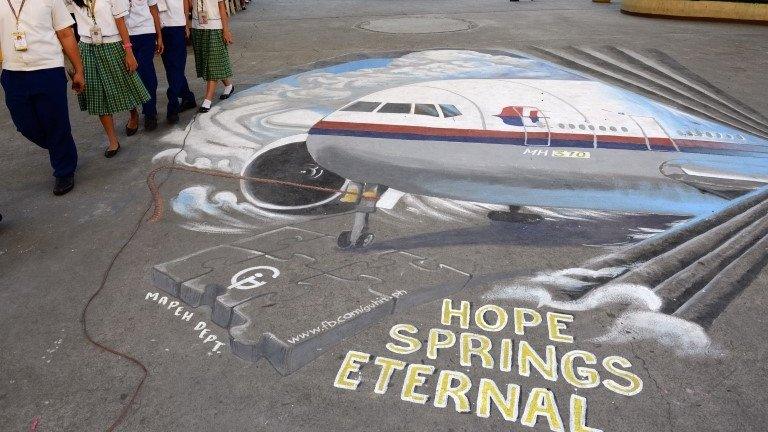The 'A-Team' that hunts missing planes
- Published
Watch: Lew, Robert and their team looking for missing planes
More than 250 planes that crashed over US land have never been found - but a team of volunteer detectives is on the case.
It began with six overheard words.
Robert Hyman, a mountaineer and explorer, was hosting a party at his home in Washington, DC.
It was December 2007, three months after the multi-millionaire Steve Fossett, external went missing over the Nevada / California border.
Despite a huge search, Fossett's plane and body had not been found.
For Robert, it didn't sit well. The military don't leave people behind, he thought. Neither do Boy Scouts. So, he said those six words.
Explorers don't leave other explorers behind.
At the same time, Lew Toulmin, another member of the Explorers Club, external, was walking past.
"When I heard it, it clicked with me," says Lew. "I made a left-turn, right into the group, and said: 'Yes!'"
And that, in a DC house party, is how the Missing Aircraft Search Team, external (Mast) began.

Steve Fossett after flying non-stop round the world in 2005
Lew knew Robert, but not well. And lots of things are said at parties. So, the next day, they held a meeting.
Robert brought in two other people: his wife Deb Atwood, a government expert, and Bob Atwater, Steve Fossett's former security adviser.
They decided to go back for the missing explorer.
It was no good getting on the first plane to Nevada. The initial search for Fossett covered 17,000 sq miles (44,030 sq km), so their first job was to make the haystack smaller.
Using data and interviews - Lew alone interviewed more than 40 people - they did that. By August 2008, nine months after the party in DC, they were ready to put boots on the ground.
Lew, Robert and more than 25 other volunteers (including some of the original searchers) met in Nevada. The team included three planes, seven pilots, and some of the best climbers in the country.
Despite searching for 19 days, they found nothing except three rattlesnakes, two bears and a herd of wild mustang.
Eighteen days later, a hiker and his dog found Fossett's ID card, 62 miles away in California.
They called a local search team and - more than a year after it crashed - the plane was found. But Fossett's remains were still missing.
One of Lew and Robert's team, who lived nearby, began searching near the crash site. He found a gnawed trainer by an animal's den.
He called the local search team, who found parts of Fossett's bones, external alongside a torn jacket.
For Lew, the end was "gruesome, sad, but gratifying". The team had - "in a little way" - helped close the case.
"It was so fascinating, and so satisfying, to be able to help," says Lew.
"We said: 'Maybe we should do this again.' A couple of our members said: 'You know, there are lots of cases out there like this.'
"We replied: 'What? Really? You're kidding me.'"
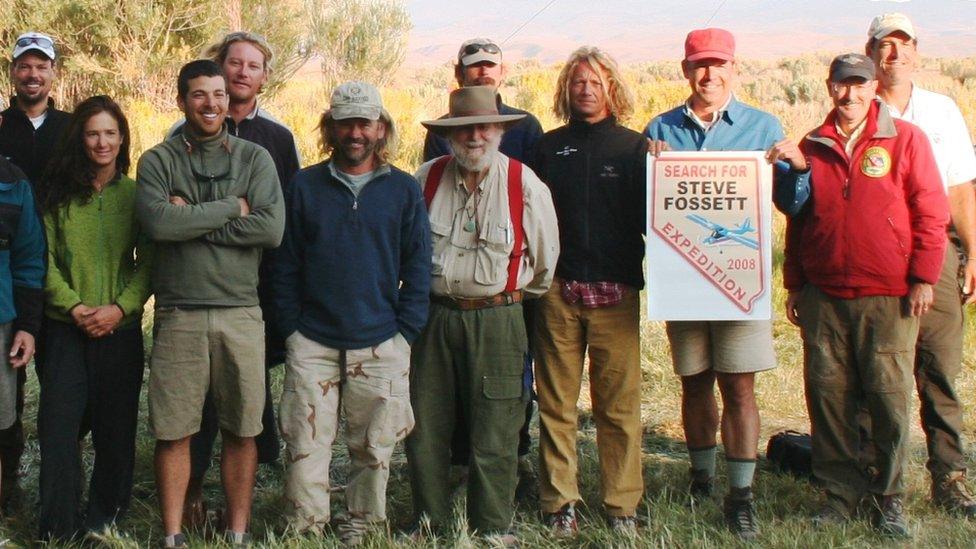
Some of the Steve Fossett search team - including Robert (furthest right) and Lew (second right)
In September 2006, Bill Westover, 54, and Marcy Randolph, 43, set off in a light aircraft from Phoenix Deer Valley Airport in Arizona.
They never came back.
When the official three-week search found nothing, Marcy's father, Phil, took on the challenge.
He renewed his pilot's licence. He spent hours searching from the air, and more hours amid the endless red rocks of Arizona. It was no use.
In 2008 - after hearing about their work in the Fossett case - Phil contacted Lew and Robert's team. The cold case was about to get warmer.
The Missing Aircraft Search Team spent more than 1,000 unpaid hours investigating what happened to Bill and Marcy.
They interviewed 40 people, including friends, family and flight instructors. They pored over reports. They analysed more than one million radar hits.
They were about to put boots on the ground, to search the area itself, when old-fashioned detective work solved the case.
In April 2009, a Mast member was going through fire reports when he noticed something. On the day Bill and Marcy went missing, two hikers reported a small fire in a remote canyon.
The fire hadn't been investigated, so the report wasn't in the main, computerised database. But the hikers' names were on the file. Mast contacted them.
Alerted by the interview, the hikers went back and saw a wrecked plane. The authorities were contacted and, two and a half years after it went missing, Bill and Marcy's plane was found.
"You ask why we do this," says Robert, eight years later, sitting in his kitchen in Washington DC. "Well if you look at the letter we got from Mr Randolph..."
He pauses, choked at the memory.
"When you get a thank you from a parent that lost a child, it's a great feeling."
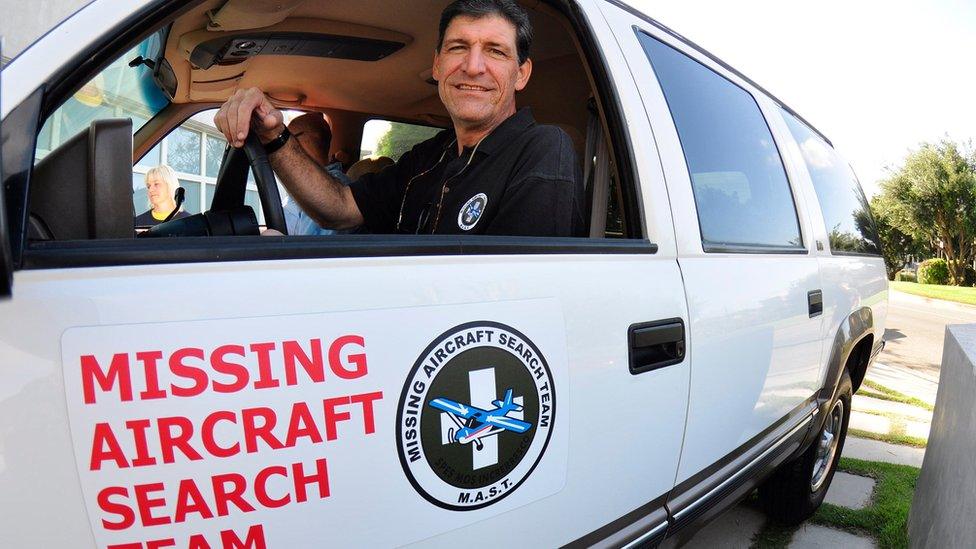
Robert Hyman - "photographer, mountaineer, and explorer," according to his business card
Until now, the number of missing planes in the United States has not been revealed.
Neither the US Air Force, its Civil Air Patrol - responsible for inland aerial search and rescue - nor the Coast Guard keeps a comprehensive list.
The National Transportation Safety Board investigates accidents but doesn't map missing planes. In fact, only one person knows about every missing plane in America.
He is a Mast member.
John Lopez Jr, a 63-year-old from Washington state, was a volunteer for the Civil Air Patrol in California between 1969 and 1975, before starting a 20-year career in the army.
Around 2003, he became curious about the planes he looked for in California his youth. Were they found? And if so - where?
There was a partial public list of accidents going back to 1964, so John began to fill in the blanks. He started in the western states - California, Oregon, Washington - before going nationwide.
Using official reports and newspapers - "I went to local libraries, state to state, looking at the microfiche" - he began to list every missing plane.
As of this week, 658 planes have been missing for more than 60 days over the United States.
Of those, 255 went missing over land. Some 403 went missing over water (coasts, lakes and the Gulf of Mexico).
The year with most missing planes was 1972, with 52. The year with fewest was 2013, with one plane (in Alaska) still missing.
John's database records the type of aircraft, where it went missing, the number of people on board, a summary of how it went missing, and the attempts to find it.
His years of research mean that, when Mast look for a plane, they have a head-start. Their haystack is smaller - and they often have information no-one else has.

Three planes that were never found
1919: Captain Mansell Richard James, a Canadian flying ace, went missing while flying a Sopwith Camel from Boston, Massachusetts, to New York City
1953: Karl Hunrath and Wilbur Wilkinson went missing in California: at the time, some claimed they were abducted by flying saucers
1972: Congressman Hale Boggs, part of a commission that investigated President Kennedy's death, vanished during a flight over Alaska

Mast is a blend of scientists, mathematicians and old-fashioned detectives. Some members work in aviation. Others work in law enforcement.
Lew is a consultant to foreign governments - he spent three years working for the prime minister's office in the Pacific island nation of Vanuatu. Robert is a photographer and investor, as well as a mountaineer and explorer.
"We have a big hulking guy, a nerdy guy with glasses… it's exactly like the A-Team," says Robert.
Official searches usually end within two or three weeks of the plane going down. When no-one else can help, families - and even law enforcement agencies - can turn to Mast.
The team usually have "six or seven" cases ongoing, but not everyone works on every case.
"It depends who puts their hand up," says Lew. "Some of them start as one-person jobs. Sometimes it will be four or five people."
They work via Yahoo groups, and speak to each other on the phone, until they need an on-the-ground search.
One of the biggest searches took place in 2009. In October 1944, a military plane set off from Mines Field - now Los Angeles International airport - but never came back.
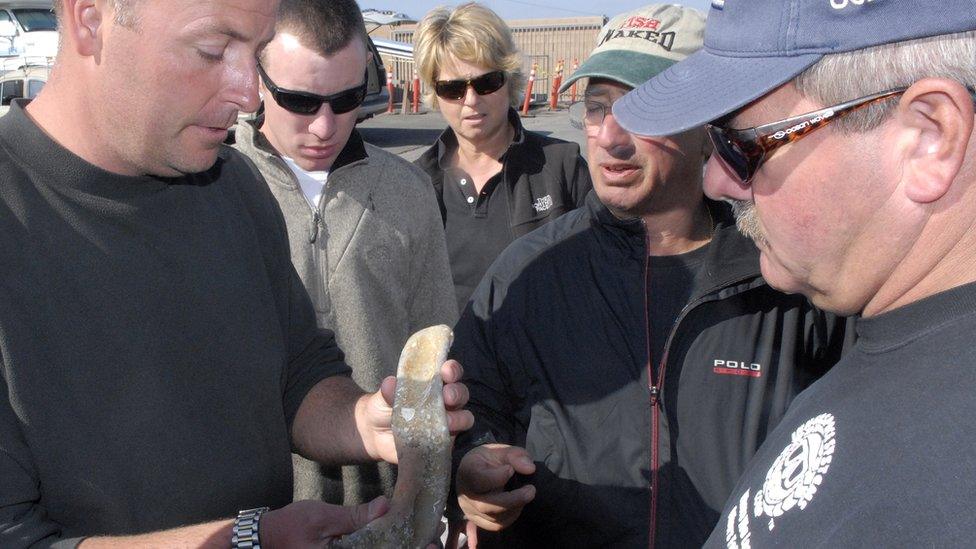
Some of the team inspecting an item found during the last missing Wasp search in California
The pilot, Gertrude Tompkins, was a Women Airforce Service Pilot (Wasp). She was 32 years old, had been married for a month, and remains the last missing Wasp.
Lew and the team uncovered the official US Army Air Force Report - 120 pages long - tracked down and spoke to surviving Wasps, and re-interviewed a witness.
The team also got an underwater map of Santa Monica Bay and found software - donated free of charge - to analyse it. When they saw pixels of interest, they sent divers down.
The divers found the remains of a military plane missing since the 1950s, and were able to tell the pilots' families. They also found parts of a light aircraft missing since the 1970s.
They didn't find Tompkins' Mustang, but they plan to try again. The group's Latin motto - Spes Mos Increbresco - translates as Hope Shall Prevail.
Mast has worked on more than 20 cases, some of them outside the US. They have found - or helped to find - at least seven planes.
Each closed case is another family with answers.
"When you meet the families, they're really devastated," says Lew. "To help them resolve it, and move on a bit, is very satisfying."
It's a message echoed by Robert.
"During the Fossett search, I was asked by the media: 'What makes you think you can solve it?"
"My response was this: I realise it's a long shot. I realise it's a very small probability of success.
"But I can tell you for certain - there is zero probability of success if you don't try."
He takes his cap off and smoothes his hair.
"We're not doing this for publicity," he continues. "We're not doing this for fame or fortune, because that's clearly not the case.
"We're doing it to try to better society - to do the right thing, and to fix a problem."
Additional reporting by James Morgan
- Published22 February 2017
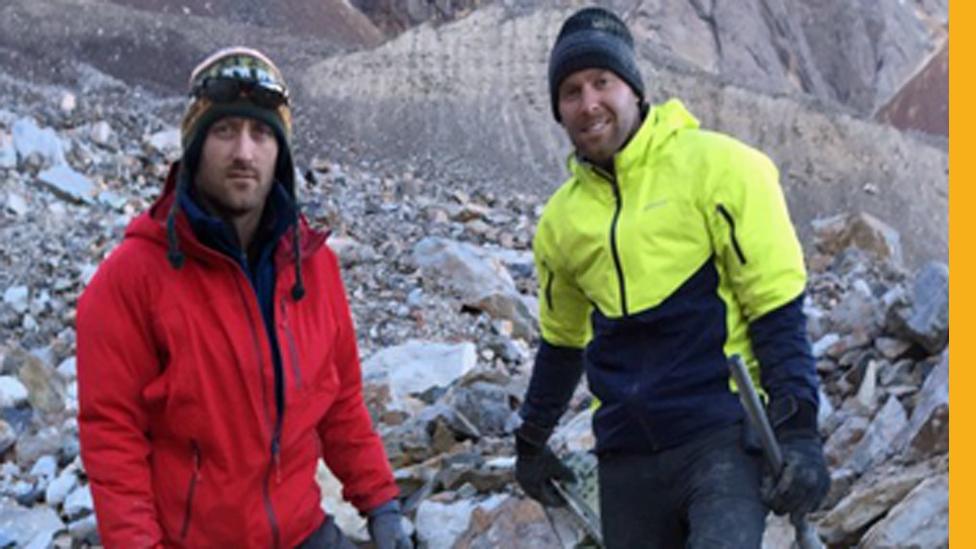
- Published17 January 2017
